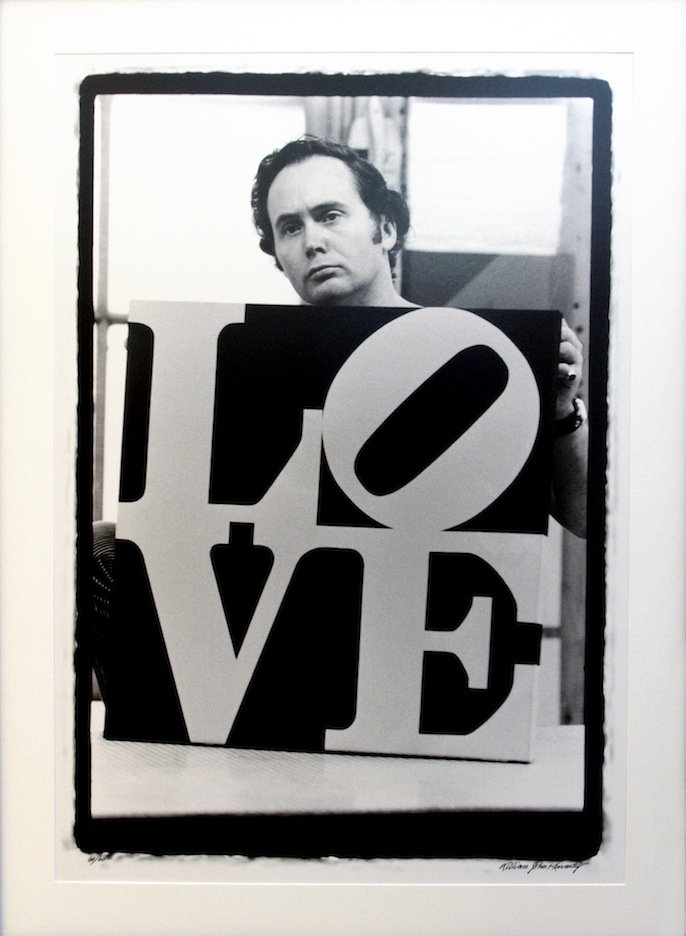Past exhibition
Sept 19 - Nov 20, 2022
William John Kennedy
LASTING IMPRESSIONS
Few people can forget the images of lovers embracing in a sea of concertgoers from Woodstock
in 1969, or Neil Armstrong’s feet touching the moon’s surface, also in 1969, or Robert Indiana’s
“LOVE” sculpture in New York made famous in the movie, “Love Story,” or Marilyn Monroe’s
skirt all aflutter over a breezy New York City subway grate from the movie “Seven Year Itch,”
Consider Andy Warhol’s ubiquitous portraits of Marilyn Monroe or his iconic Tomato Soup
paintings. Who hasn’t grown up on tomato soup and grilled cheese sandwiches and found
resonance and even a bit of nostalgia when viewing those soup paintings? We all make
associations when seeing images. But how did Warhol and Indiana become such pop-culture
sensations? Who made it happen? Why do these images embody such long-lived impressions?
One name: William John Kennedy.
Kennedy’s fame came from a love affair with the camera and his friendship with artists. He
captured anecdotes in film with famous people—his friends--before they were famous. His
work in photography highlights critical upheavals in American society. And he left a profound
impact, not just elevating the status of iconic artists, but taking photography to a new level not
as mere photojournalism, but as fine art.
The lasting impression of William John Kennedy is his rich legacy as an authority of the
photographic medium. What he brought to the medium of photography was an uncanny ability
to capture spontaneity and arouse a sense of play, traditionally an “off-limits” notion in the
field of photography. What stands out was his singularity of subjects, linking them to popular
culture and to the viewer. His subjects of Warhol and Indiana eventually became two of the
most iconic artists of the 20th century, emulated throughout the 21st century in cinema, and
shown in many sundry imitations, representations, and depictions.
Their ubiquity and allure seeped into the American collective consciousness and have endured
cross-generationally. They’ve been replicated into the mainstream culture such that their
popularity increased. Even if you were born last year, 15 years from now the chances of seeing
even one of these images is reasonably certain, unless you live in a cocoon. Their familiarity has
a lot to do with memory and association that surfaces when one encounters a work of art and
testifies to the enduring power of art. It's the staying power, the lasting impressions of the
work.
His “Indiana with ‘Love’” depicts Robert Indiana standing behind his painting in a fleeting
moment of repose. It was 1963 and the nacent period of graphic imagery and bold colors. Shot
in black and white reduces the photograph to its essential characteristics of shape against
shape. His “Warhol Holding Marilyn Acetate II” shot the following year, shows Warhol in his
studio experimenting with materials. With Warhol standing behind the layer of acetate,
Kennedy captured once again a moment in time in the daily life of an artist. His “Andy Warhol
with Flower and His Flowers Canvas,” evinces Warhol’s outrageousness long before his name
became synonymous with the Pop Art Movement; it visually documents Warhol’s boundless
creative activity and spontaneity. It reveals the “mistfit” superstar early in his career adjacent to
one of his most iconic works. Kennedy did for artists what every artist dreams: to have
someone, anyone with ingenuity and imagination, take interest and document their journey,
their story. Ironically, Warhol more than anyone in history never waned in self-promotion or
documentation. Kennedy merely jump-started the engine.
Warhol Flowers II 102-C, 1964, printed 2010, Chromogenic Print, 16 x 24 in
Warhol Holding Marilyn Acetate II, Executed: 1964-Printed: 2010 Silver Gelatin Fiber Print 24 × 20 in
Indiana with 'Love', 1963, Silver gelatin print, 30 x 40 in.
Andy Warhol, Field of Flowers, 1964, Queens, New York, 2005 Photographic Print, 19 1/2 x 13 1/4 in
Warhol Holding Marilyn Acetate lll, 1964, Limited Edition, Printed 2010, 16 x 20 in
Contact us
If you have any inquiries or comments, please send us a message using the contact form or email us at info@johnwilliamgallery.com







